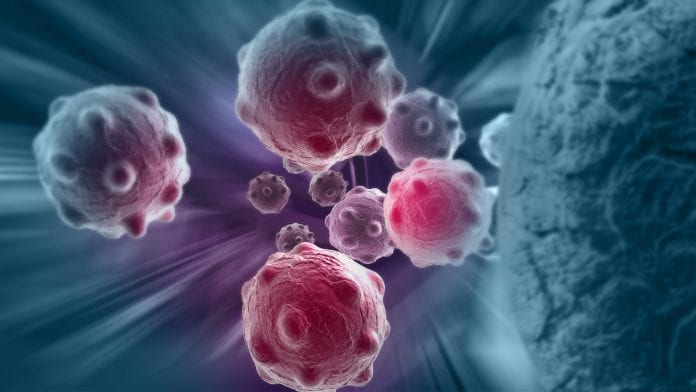
A newly developed technology that helps to eliminate tumours could also reduce the side effects of cancer therapy and better deliver COVID-19 therapies to the lungs.
Researchers at the University of Zurich (UZH) have developed the new technology – SHREAD: for SHielded, REtargetted Adenovirus – for which the team have modified the adenovirus to deliver genes for cancer therapeutics directly into tumour cells. The team have found that this method spares healthy cells unlike traditional chemo- or radiotherapy.
Once inside tumour cells, the genes act as a blueprint for therapeutic antibodies, cytokines, and other signalling substances, which are produced by the cancer cells themselves and act to eliminate tumours from the inside out.
The research has been published in the journal Proceedings of the National Academy of Sciences.
Tricking the tumour
The new method builds on key technologies previously engineered by the group leader Andreas Plueckthun team, including directing adenoviruses to specified parts of the body to hide them from the immune system.
The SHREAD system made the tumour itself produce a clinically approved breast cancer antibody, called trastuzumab, in the mammary of a mouse and after a few days, SHREAD produced more of the antibody in the tumour than when the drug was injected directly.
The researchers also found that the concentration in the bloodstream and in other tissues where side effects could occur was significantly lower with SHREAD.
“We trick the tumour into eliminating itself through the production of anti-cancer agents by its own cells,” says postdoctoral fellow Sheena Smith.
Plueckthun added: “The therapeutic agents, such as therapeutic antibodies or signalling substances, mostly stay at the place in the body where they’re needed instead of spreading throughout the bloodstream where they can damage healthy organs and tissues.”
Utilising SHREAD for COVID-19
The team highlight that SHREAD can be utilised for other diseases, including as a therapy aimed at COVID-19, as it is capable of delivering a wide range of biologics that would otherwise be too toxic.
“By delivering the SHREAD treatment to patients via an inhaled aerosol, our approach could allow targeted production of COVID antibody therapies in lung cells, where they are needed most,” Smith explains. “This would reduce costs, increase accessibility of COVID therapies and also improve vaccine delivery with the inhalation approach.”









